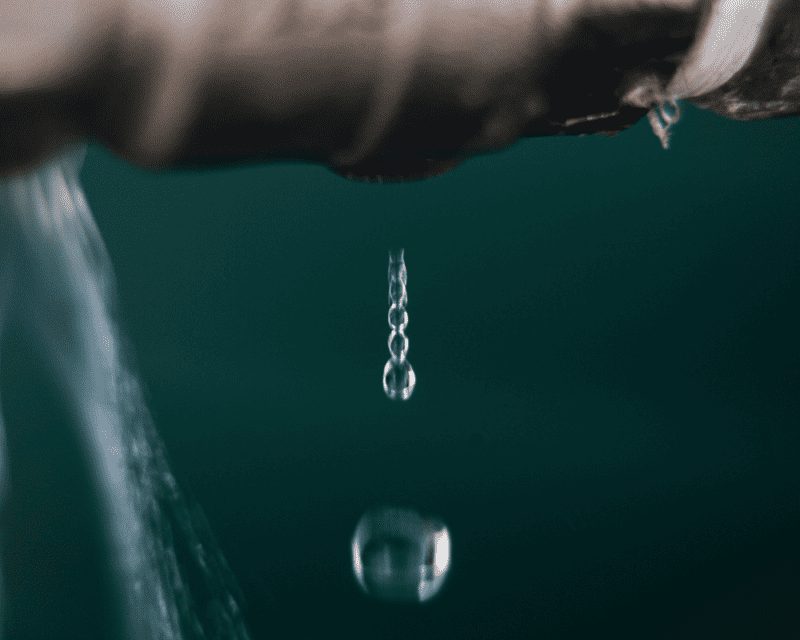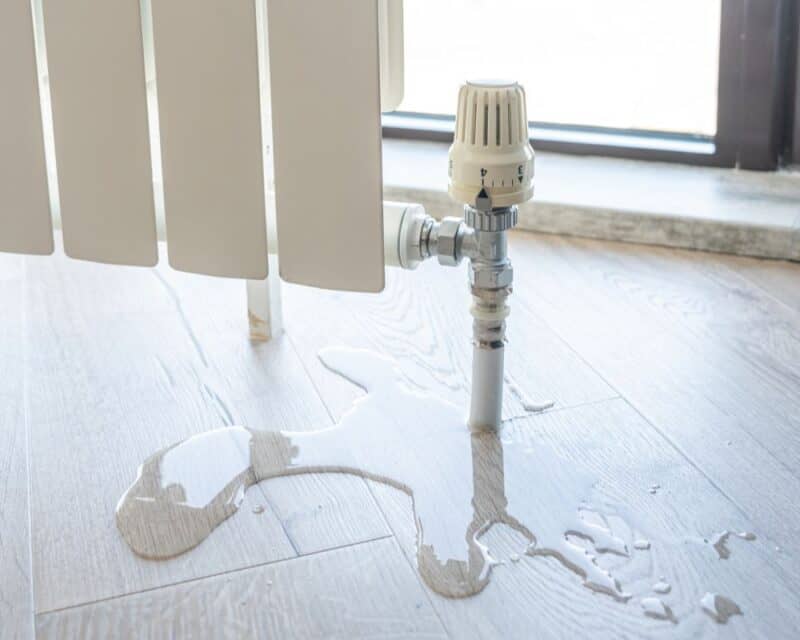Water leaks in a home can cause extensive damage if addressed. Undetected moisture buildup can lead to mold development, deterioration of building materials, electrical hazards, and substantial increases in utility bills. Implementing proactive leak detection and timely repairs is crucial for homeowners seeking to protect their most valuable investment.
Here, we cover common signs indicating a leak’s presence, techniques for pinpointing the exact location, preventive strategies to mitigate risk, and best practices for effective repairs permitting prompt return to normal household function.
Recognizing the Signs of a Water Leak
Water leaks often lurk in the shadows, masked by seemingly innocuous indicators. But a keen eye (and ear) can unveil their secrets. Here are some red flags to watch out for:
Unexplained increases in your water bill
Frequent spikes in your water bill without changes in usage habits suggest a concealed leak. Comparing seasonal bills year-over-year also highlights abnormal consumption. Inspect usage during vacation periods when occupants are away to isolate household leakage from family flows.
Sounds of dripping or running water
Faint sounds of water movement, especially in stillness, may indicate flow through compromised pipes or seals. Tracing noises to their origin pinpoints leakage sites. Listen closely to appliances, behind walls, and along home infrastructure during periods of minimal activity.
Mold or mildew growth
Excess moisture seeping into walls, floors, or crawlspaces encourages rapid mold colonization long before structural damage manifests visually. Musty odors accompany mold growth. Inspect window frames, bathroom grout, behind furniture, and underneath sinks for early outbreaks.
Cracks or peeling paint
Hairline wall fractures seeping water dissolve adhesive bonds, causing overlying paint to bubble or peel. Brown streaks typically underline leaks. Scan closely for hairline cracks suggesting water intrusion.
Uneven floors or warped surfaces
Pooling water buckles flooring from below or warps doors that swell and fail to fully close. Spongy sections underfoot also betray liquid intrusion. Check floors for flatness and doors/windows for uniform closure.
Musty odors
Stagnating moisture produces distinct stale smells, especially in hidden areas that are rarely accessed. Clearing clutter helps you sniff out offending leak locations. Trust your nose to guide you through problematic zones.
Common Causes of Water Leaks

Several factors can contribute to leaks in a home. Understanding these potential causes that help with early water leak detection allows homeowners to take preventive measures to mitigate the risk. Some common causes of leaks include:
Faulty Plumbing
Cracked pipes, loose joints, broken seals around valves, and loosening pipe fittings frequently precipitate leaks. Over time, metal corrosion, freezing weather events, and ground shifting undermine plumbing integrity. Inspect exposed pipes and fittings for cracks, corrosion, and looseness.
Roof Damage
Extreme weather, falling debris, material deterioration due to age, and poor initial construction can compromise roofing materials, allowing water intrusion that follows structural channels. Therefore, it is important to carefully examine roofing, skylights, flashing, and chimneys after severe storms.
Appliance Malfunctions
Washing machines, dishwashers, water heaters, refrigerators, and HVAC systems contain extensive piping vulnerable to failure over time, especially with inadequate maintenance. Technological advances necessitate upgrading appliances approaching or exceeding the expected lifespan.
Poor Sealing
Gaps around windows, doors, pipe penetrations, electrical boxes, and siding facilitate moisture entry that needs that requires remediation. Caulking helps temporarily while sealing upgrades prevent a recurrence. Survey sites where infrastructure breaches walls, allowing moisture ingress.
Methods for Detecting Water Leaks

Detecting water leaks in the early stages is crucial for preventing extensive damage. Homeowners can utilize various methods and technologies to identify potential leaks:
Visual Inspections
Periodic patrols scanning for mold, drips, moisture meters, and the aforementioned signs, in areas prone to failure, like basements, provide low-tech leak detection. Inspect water-using appliances, pipe connections, and infrastructure seals routinely.
Water Meters
Meticulously tracking water meter movements with all household flow simultaneously stopped betrays any continued readings confirming a leak’s presence. Conduct controlled water meter checks at least annually.
Leak Detection Devices
Moisture meters, infrared cameras, smoke machines, and wireless listening devices amplify evidence of concealed water intrusion, guiding further exploration. Consider investing in technologies matching leak susceptibility.
Professional Inspection
Enlisting qualified technicians to scrutinize plumbing systems, foundations, roofing and appliances using advanced diagnostic tools reliably uncovers elusive leaks missed through casual monitoring. Schedule preventive check-ups focusing on household leak hotspots.
Preventive Measures for Water Leak Mitigation
Implementing preventive measures can significantly reduce the risk of water leaks and minimize potential damage to the home. Some effective strategies include:
Regular Maintenance
Proactively servicing pipes, replacing worn washers/gaskets, upgrading aged appliances, and inspecting infrastructure help avoid failure-induced leakage. Stick to manufacturer-recommended maintenance schedules.
Upgrading Infrastructure
Replacing corroded steel pipes with durable PEX tubing, installing overflow pans under appliances, waterproofing basements, and enhancing insulation buffers extreme weather damage preventing entry. Prioritize upgrades to prevent catastrophic leakage.
Smart Technology
Connective sensors on appliance water lines, whole-house leak detection systems, and automated water shut-off valves limit excessive outflow upon sensing unanticipated usage patterns. Consider home automation systems offering whole-house insights.
Professional Consultation
Leveraging contractor expertise through comprehensive home inspections, routine maintenance agreements, and pre-winterization checks provides third-party oversight spotlighting vulnerabilities. Seek professional consultation about suspected and emerging trouble spots.
Conclusion

Water leaks present serious threats to home integrity and warrant proactive monitoring through regular inspections, installation of preventive technology, prompt repair of detected failures, and consultation with leak detection specialists. While warning signs can initially be subtle, recognizing and resolving issues early is key to avoiding catastrophic damage from unabated moisture accumulation.
Implementing prudent maintenance protocols, acting on red flags, leveraging innovations in leak alerts, and strategically enhancing protective infrastructure offer reliable means for getting ahead of leaks before they get out of hand. When professional assistance is needed to investigate suspected but unconfirmed failures or pinpoint elusive breach points, enlist trusted technical services to audit household systems thoroughly using advanced diagnostic tools.
With the growing reliance on housing investments as financial anchors, few things prove more crucial than safeguarding structural and financial well-being against preventable water damage. When it comes to comprehensive leak prevention, an ounce of precaution is worth a pound of cure. Protect your interests through proactive monitoring, timely response to warnings, and selecting qualified partners to offer guidance on improving defenses.
